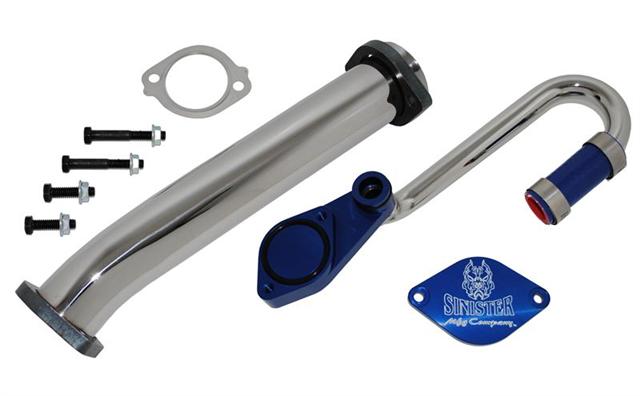EGR Delete Kits Explained: Costs & Power Gain

EGR delete kits have gained popularity among vehicle enthusiasts seeking to enhance performance by removing or bypassing the EGR system. Understanding the costs and potential power gains associated with improved EGR delete kit can help you make an informed decision about this modification. Let’s delve into the details:
Costs of EGR Delete Kits:
The costs of EGR delete kits can vary based on several factors:
Kit Type and Components: The complexity of the kit and the components included will influence the price. Basic kits might only include the necessary hardware, while more comprehensive kits could also include tuning modules, exhaust modifications, and additional components.
Vehicle Make and Model: Different vehicles have varying EGR system designs, which can impact the complexity of the delete process. As a result, the cost can differ based on the specific vehicle.
Brand and Quality: The brand reputation and quality of components can affect the price. Higher-quality kits from reputable manufacturers might come at a premium.
Labor Costs: If you choose to have the kit professionally installed, labor costs will contribute to the overall expense.
Tuning: In many cases, modifying the EGR system requires adjusting the engine’s tuning to prevent error codes or check engine lights. Tuning costs may be separate from the kit cost.
EGR delete kit prices could range from around $100 for basic kits to over $1000 for more comprehensive kits that include additional components or tuning solutions. It’s important to research current prices and choose a kit that suits your budget and performance goals
Power Gains from EGR Delete Kits:
EGR delete kits are often sought after for their potential to improve engine performance. Here’s how they can influence power gains:
Increased Airflow and Combustion Efficiency: By removing or bypassing the EGR system, the intake air is cleaner and cooler, leading to improved combustion efficiency. This can translate to modest gains in horsepower and torque, particularly in turbocharged engines.
Reduction in Carbon Deposits: Deleting the EGR system can help prevent carbon buildup on intake valves and in the intake manifold, which can lead to better engine breathing and potentially some power gains. SuncentAuto parts and accessories are of excellent quality and also affordable in the automotive aftermarket store.
Throttle Response: Improved combustion efficiency and airflow can contribute to better throttle response, making the vehicle feel more responsive and lively.
However, the extent of power gains can vary widely based on factors such as the vehicle’s make and model, engine configuration, tuning adjustments, and the specific EGR system design. It’s important to manage expectations and consider the potential trade-offs, including emissions implications and legal considerations.
Legal and Emissions Considerations:
Before proceeding with an EGR delete kit, it’s crucial to be aware of local emissions regulations and laws. Modifying emissions control systems, including the EGR system, might lead to legal consequences and vehicle inspection failures if not done in compliance with regulations.
Conclusion:
EGR delete kits can offer power gains by optimizing airflow and combustion efficiency, but their effectiveness can vary. While cost and performance gains are important factors to consider, it’s equally vital to understand the legal implications of modifying emissions control systems. Research thoroughly, consult experts, and weigh the benefits against potential drawbacks before making a decision about EGR delete kits.



